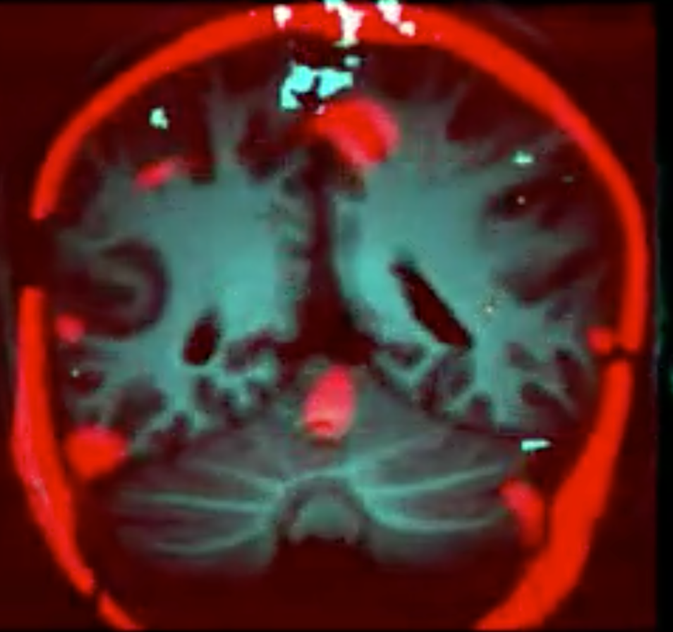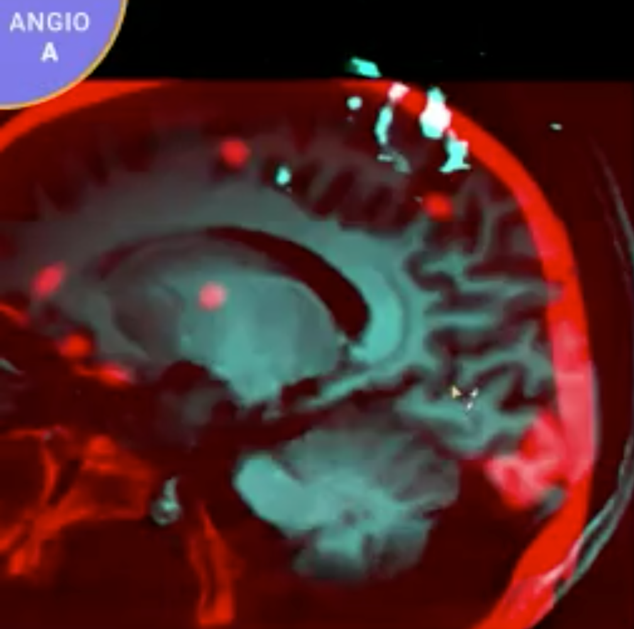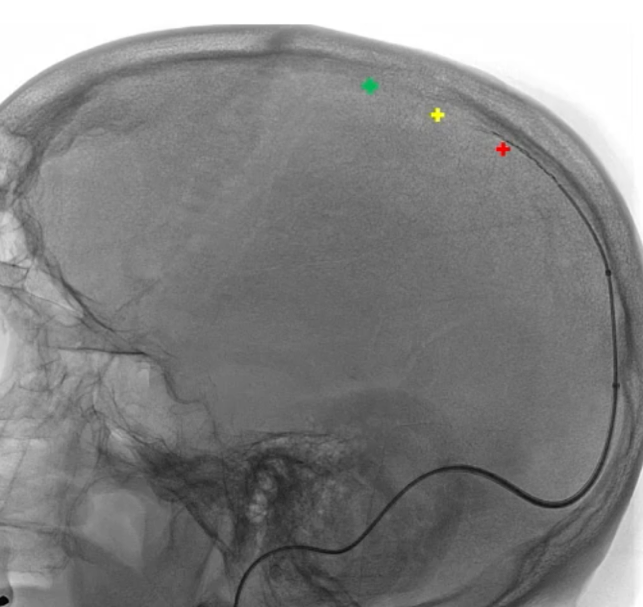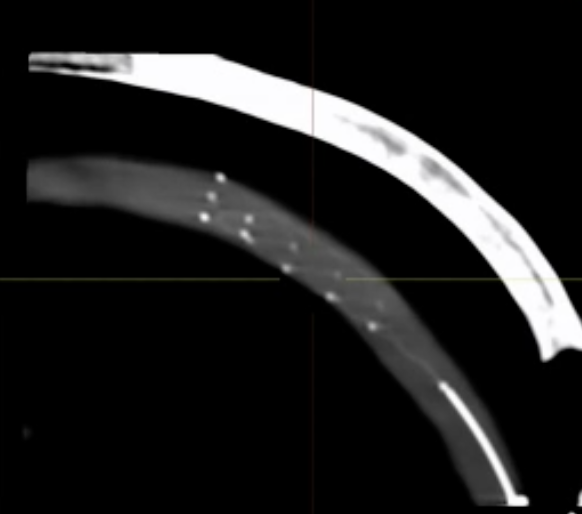Innovation by J. MOCCO ep.2/2 - SLICE Worldwide 2022
InnovationInnovation : Synchron’s Endovascular Brain Computer Interface (BCI)
Objective, step-by-step procedure and its utility
Objective: patient can control the computer and give it commands
How it is done?
External system of the device is plugged in to the computer and connects via Bluetooth with internal receiver so is able to receive the signals from Stentrode activated by motor cortex of a patient)
Procedure step-by-step
1. Pre-Implant Planning:
MR venogram:
- Assess venous anatomy
- Confirm that patient has bilateral patent jugular veins that are patent
- Exclude major anatomical variations
Functional MRI:
- Identify motor cortex on fMRI (for example responsible for lower limb function or upper limb function or both – the goal is to map whole targeted area)
- Determine target site in superior sagittal sinus (SSS)
- Set markers to target site (fusion with x-ray in angio suite with 3 steps check-up:
- 1: stereotactic fusion,
- 2: measurement corresponding to the cranial sutures
- 3: relation to the venous anatomy)


2. Procedure itself
Materials:
- 6F sheath
- 6F guide catheter
- 016” guidewire J tip
- Intermediate catheter – Benchmark 071
- Distal access catheter – 3Max
- Stendrode
- Tunneling tool
- Cautery for pocket creation
- Implantable Receiver Transmitter Unit (IRTU)
Procedural steps:
- Arterial access to demonstrate the sinus.
- Baseline right ICA angiography
- 3D digital subtraction angiography (DSA) co-registered to MRI
- Advance 4-Fr preloaded delivery catheter
- Unsheath device
- Maintain visualization of target markers and patency of SSS
- Post-delivery 3D-DSA to confirm patent sinus and position
- Create subclavicular, subcutaneous pocket
- Tunnel lead
- Plug lead into telemetry unit
- Single shot to confirm alignment
- Collect intraoperative neuronal data
- Implant telemetry unit and close


3. Post implantation:
- Control of the procedure toleration
- Home discharge 48 hours post implantation
- DAPT for 3 months, then single agent
So far:
- No adverse events reported during or following procedure – 3 months
- Activation of the device achieved on time
- Successful switch control achieved during first session
- Achieved digital device control for instrumental activities of daily living: search the internet, send a message, join a video call, symptom reporting
Examples of activities:
- Patient can control the computer and give it commands (he is able to: search internet, read books , do online shopping, do online banking ect.)
- Patient can turn on and turn of the lights in the house
- Patient can communicate and contact the relatives by sending the messages
Summary:
Synchron’s Endovascular Brain Computer Interface is a minimally invasive endovascular BCI that has potential to restore neural signals transmission to control digital device and improve patient’s level of independence and quality of life.




